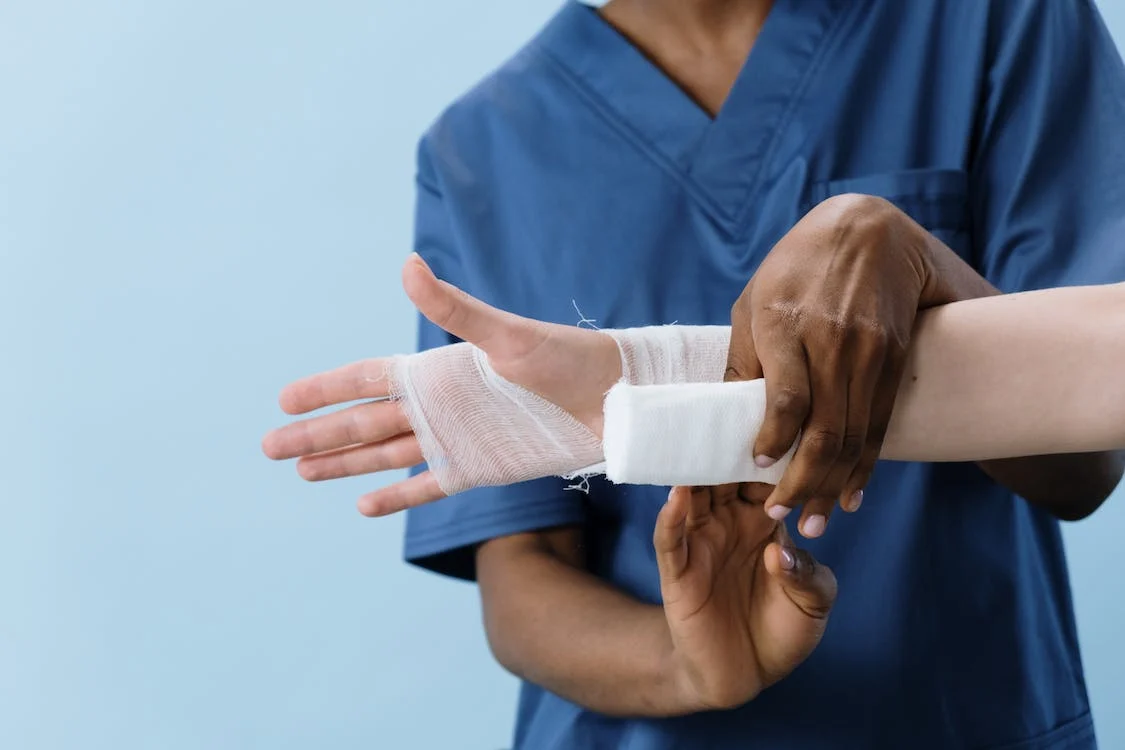
High school fall sports provide valuable physical activity and team engagement, but they also bring the possibility of injuries that can impact young athletes. Understanding these risks and taking preventive measures is crucial for ensuring a safe and enjoyable sports experience.
1. Sprains and Strains
In sports like soccer, football, and cross-country, sprains (ligament injuries) and strains (muscle/tendon injuries) are common. These can lead to pain, swelling, and limited movement, potentially causing lasting joint issues. RICE stands for (R)est, (I)ce, (C)ompression, and (E)levation and it is the best form of rehabilitation. The RICE method is a simple technique that helps athletes reduce swelling, ease pain, and speed up the healing process. For more information on the RICE method, check out the University of Pittsburgh Medical Center’s article about it HERE!
2. Concussions
Heavy contact sports like football carry a risk of concussions, which can harm cognitive function and emotional well-being. Rapid recognition, rest, and adherence to return-to-play protocols are vital to prevent further harm. Many people aren’t aware of the major implications concussions, especially repeated concussions, can have on the body. If you think you may have a concussion, seek medical help right away. When diagnosed with a concussion it is important to rest and give the brain time to properly heal, avoid screens where possible and take a break from physical activities. Along with that follow any other instructions the doctor gives you and constantly self-monitor your symptoms in the event that symptoms worsen.
3. Fractures
A fracture is a partial or complete break in the bone. Sports such as football, volleyball, and gymnastics expose athletes to fracture risks due to high impact. Fractures can disrupt bone growth and require extended recovery periods. Fractures are as serious as they sound and thus, have a strict treatment regimen. If the fracture is more on the minor side, a splint or a plaster cast for a set amount of time can heal the fracture. For more serious cases, metal rods and/or plates must be surgically inserted to hold the pieces of the bone together.
4. Overuse Injuries
Cross-country and tennis can result in overuse injuries like stress fractures and tendinitis. Gradual development of these injuries from repetitive motions may lead to chronic pain if not addressed promptly. Overuse injuries can start off similar to sprains and strains, this means that some rest and the RICE method could be all you need to heal from the injury. On the other hand, if you try to play through these injuries and continue to overwork them, this fairly minor injury could lead to a fracture that could require more extensive and more expensive treatments to get the injured area healed and back to normal.
5. Heat-Related Concerns
Intense fall sports can lead to heat-related problems like heat exhaustion and heatstroke. Dehydration and high body temperatures pose severe risks. This is an issue that is common in training camps, especially for sports like football where camps take place in the peak heat of late summer in preparation for the fall season. Hydration, rest breaks, and practicing during cooler times can prevent these conditions. For more information about heat stroke and heat exhaustion, and what you can do if you or someone around you is affected by them, check out this article from The Mayo Clinic HERE!
General Prevention Tips:
- Warm-Up and Stretching: Prioritize a proper warm-up and stretching routine to enhance flexibility and blood flow, reducing the risk of sprains and strains.
- Technique and Coaching: Proper coaching and technique training can minimize the risk of fractures and overuse injuries.
- Protective Gear: Use appropriate gear like helmets and padding in contact sports to prevent head injuries.
- Rest and Recovery: Ensure adequate rest between activities to prevent overuse injuries and support overall well-being.
- Hydration and Nutrition: Maintain proper hydration and nutrition to prevent heat-related illnesses and optimize performance.
In conclusion, high school fall sports offer a realm of opportunities for growth and achievement, but this journey must always prioritize a commitment to safety. By comprehensively understanding the common injuries, acknowledging their dangers, and adopting preventive practices, we can ensure that our youth athletes thrive both on and off the field. Beyond preventing injuries, it also about helping them understand and take care of their body. If you, or a student athlete in your life has sustained any of the injuries we’ve talked about, book an appointment with AFC Urgent Care Portland for as soon as today. You can book an appointment by calling us at (503) 305-6262 or book an appointment online by clicking HERE!


